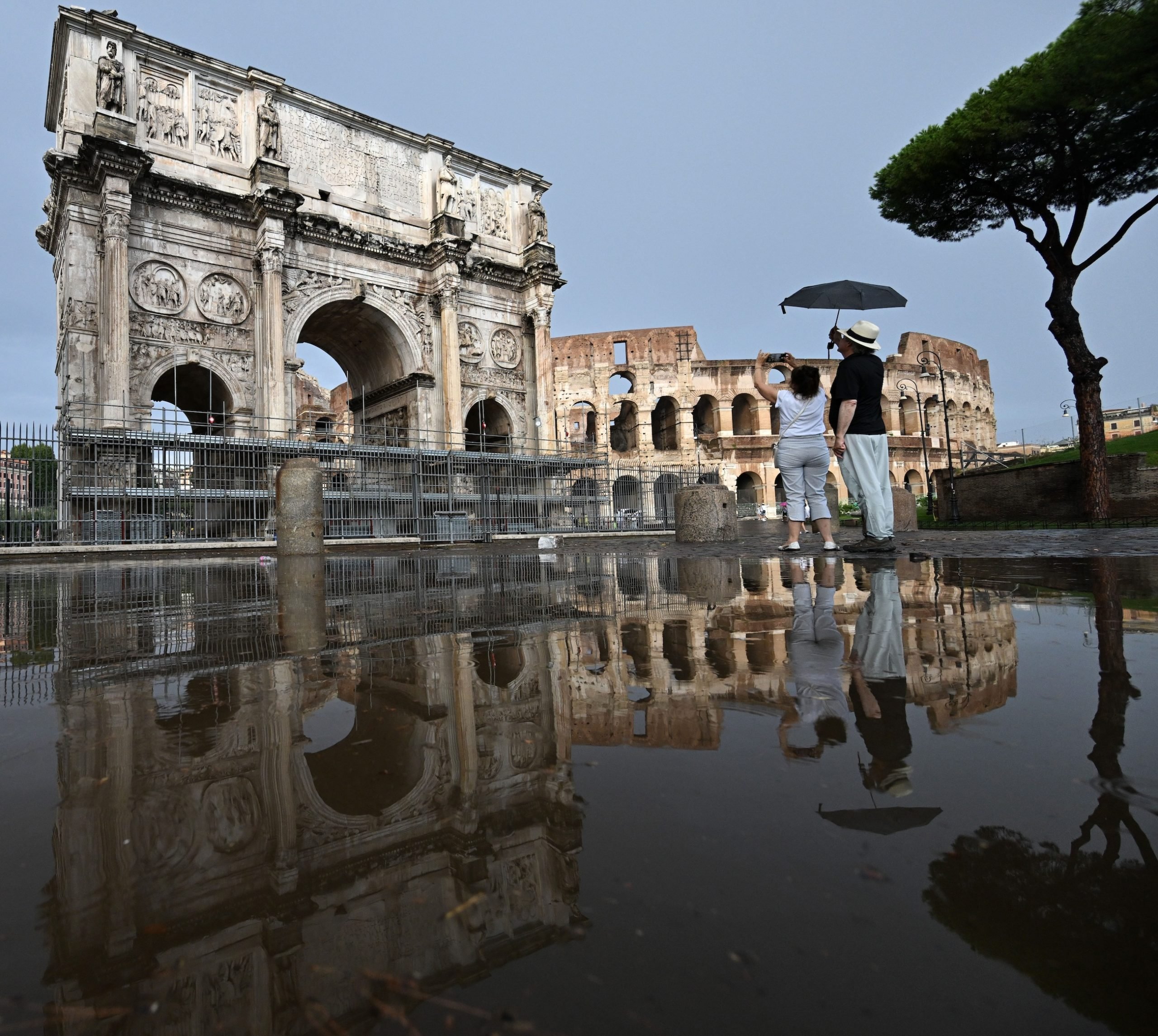
One of Rome’s most popular tourist attractions saw sudden and catastrophic storms on Wednesday, during which a bolt of lightning struck the famed Arch of Constantine, blowing chunks of stone off of the structure.
The Colosseum Archaeological Park confirmed the lightning strike to Reuters. The extent of damage is now being evaluated.
“We intervened promptly by collecting the fragments that are now in storage and being analyzed,” said the Archaeological Park in a statement to Artnet News.
“The recovery work by technicians was timely. Our workers arrived immediately after the lightning strike. All of the fragments were recovered and secured,” the park said in a statement to the Guardian.
It so happens that conservation work was already in progress on the south side of the Arch, which will now pivot to repair work.
“During the already scheduled maintenance intervention on the southern facade, the detached fragments will be repositioned ,” the Park said.
The storm dumped nearly two and a half feet of rain in less than an hour, about the amount the city usually gets in a month. Two large trees fell, leading to the closure of the Circus Maximus track, and the Trevi Fountain was flooded, reported CNN.
Photo taken on Sept. 3, 2024 shows a fragment fallen from the Arch of Constantine in a thunderstorm in Rome, Italy. Photo by Alberto Lingria/Xinhua via Getty Images.
In a post on X, Rome mayor Roberto Gualtieri called the event “a water bomb.”
“The power of the storm was sudden and was not predicted by any weather bulletin,” said Sabrina Alfonsi, Rome’s councillor who specializes in the environment, in a statement quoted in the Guardian.
A tourist who saw the lightning strike the monument indicated a large piece of stone that was blown off of the structure, according to Reuters.
“All fragments were recovered and secured. Damage assessments have already begun and the analyses will continue tomorrow morning,” the archaeological park said.
Tourists pitched in to the effort, turning over loose pieces of stone they found at the foot of the arch in case they were pieces of the monument, reports the AP.
The 4th-century arch, built to celebrate Emperor Constantine’s victory over his rival Maxentius in the year 312, looms some 82 feet over the park, one of the world’s most-visited sites by tourists, which also includes features like the Roman Forum and the Palatine Hill. The monument is not far from the Colosseum, whose lower levels were also inundated in the storm, leading to its remaining closed on Wednesday, per CNN.